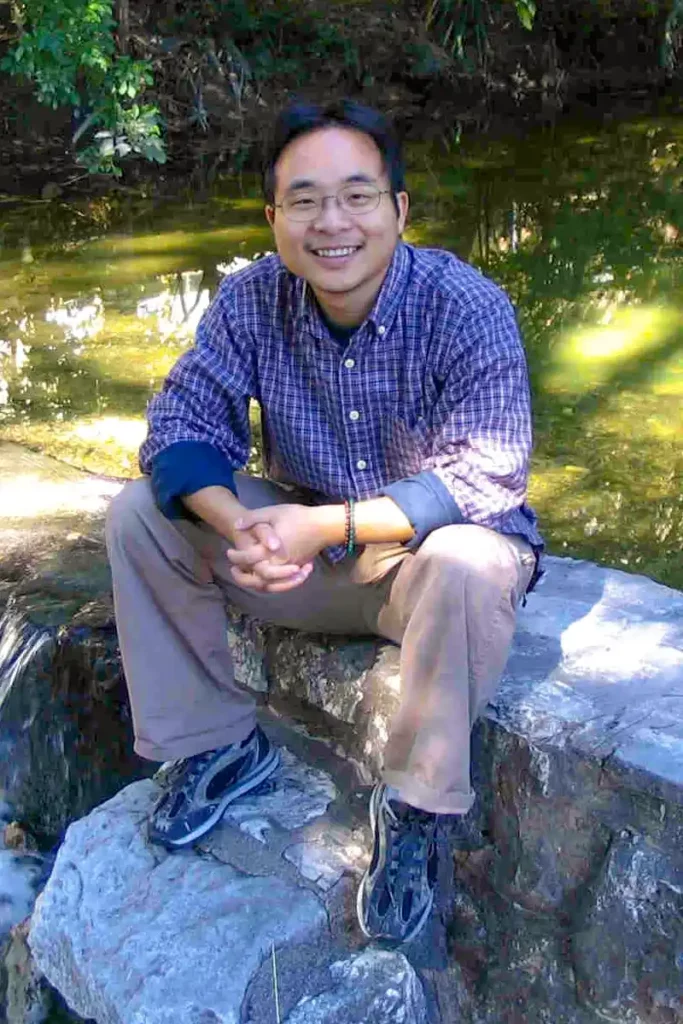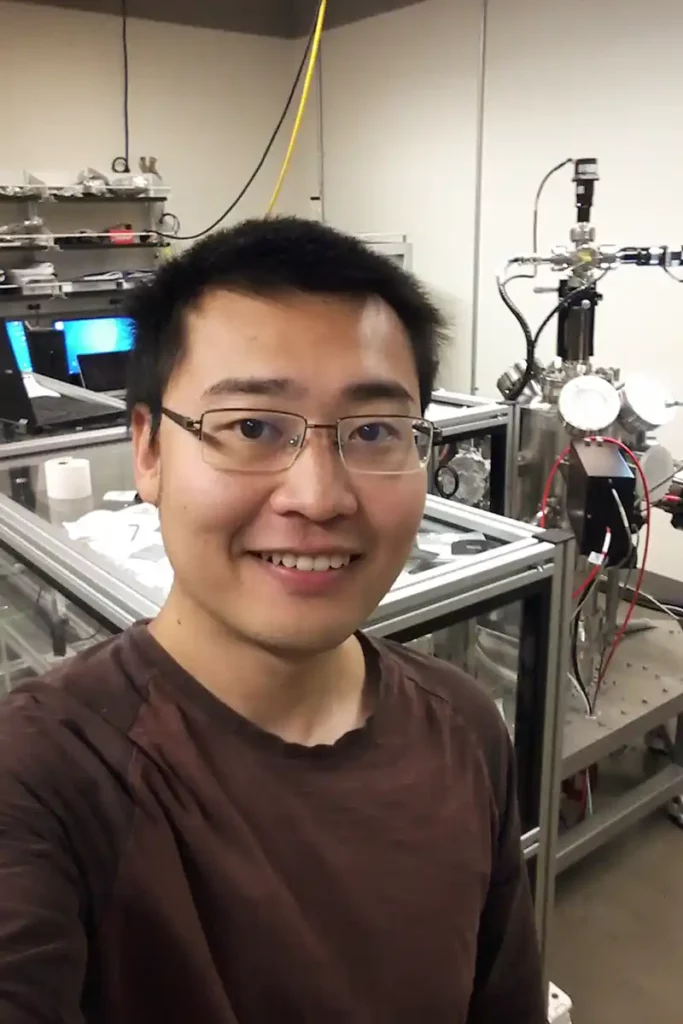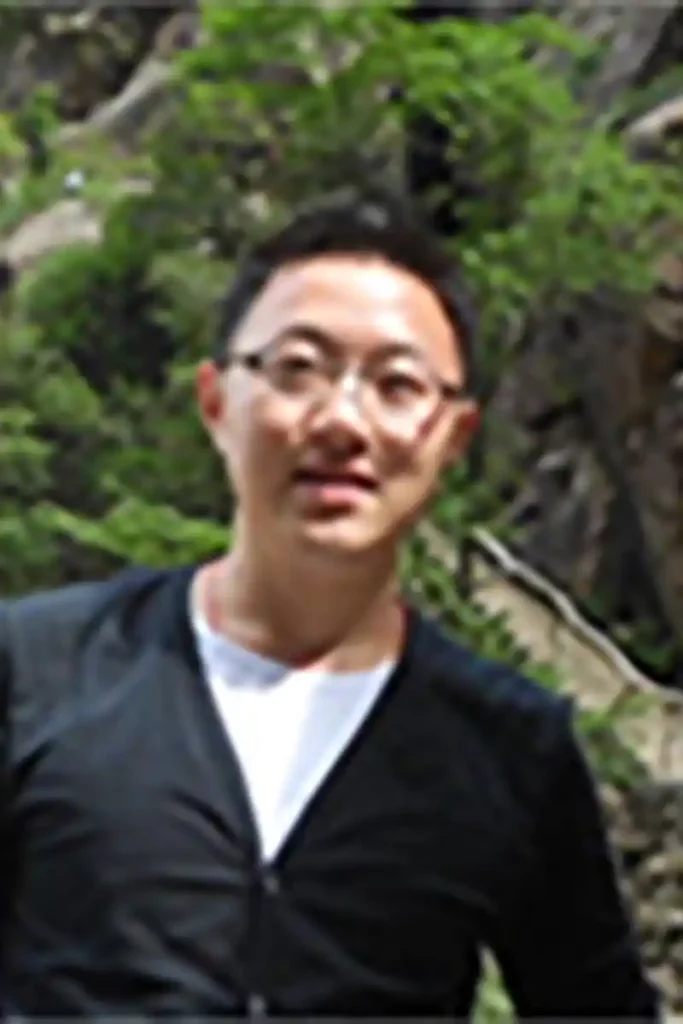Symmetry Breaking in Quantum Systems







What nature doesn’t readily provide, Associate Professor Jian Liu’s group will create or compel. By designing or controlling a material’s geometry they can tune how its electrons behave. Fundamental research like this is the foundation of everyday electronics we know well. It reveals how phenomena like magnetism, insulation, and superconductivity arise, opening the door to new and exotic properties that drive future discoveries. Graduate students and postdocs play key roles in Liu’s group and have found creative ways to use or alter an atom’s architecture to control electronic behavior.
Breaking Some (But Not All) Rules
How do scientists tune electrons? It starts with the materials they study. Liu and his colleagues focus on samples that have a crystalline structure, and that involves symmetry.
As Richard Feynman explained in his famous lectures, “everyone likes objects or patterns that are in some way symmetrical. It is an interesting fact that nature often exhibits certain kinds of symmetry in the objects we find in the world around us. … The crystals found in rocks exhibit many different kinds of symmetry, the study of which tells us some important things about the structure of solids.”
Researchers have been interested in solid state physics for decades. Simply put, it’s the science of solid materials, where atoms are in close quarters. This proximity gives rise to intriguing interactions, especially where electrons are concerned. That knowledge gave us devices like transistors and semiconductors. Solid state physics is part of what’s now more commonly known as condensed matter physics, which includes materials with the lattice-like, repetitive patterns Liu studies. To get to new and interesting physics, his group has found ways to break that symmetry in quantum materials.
“Condensed matters are complicated due to the large number of constituents, especially when quantum effects are significant,” Liu explained. “While electrons often spontaneously break a certain symmetry, they have to follow the symmetries afforded by the crystal structures. If we can design or control the lattice symmetry as we want, we can tune electron behavior the way we want and even force them to spontaneously break another symmetry that they don’t want to break originally.”
In recent papers his group has outlined a successful strategy to do this, including materials that already exist in nature and “toy model” materials they created on their own.
Top-Down Design and Bottom-Up Synthesis
One of Liu’s interests is the interplay of topology and electron correlation in materials. Topology has to do with systems that don’t change even when you bend, twist, or deform them. Electron correlation is how much an electron’s movement is determined by other electrons in the same system. Topology has been a more recent revolution in understanding quantum materials, but electron correlation isn’t well understood in quantum materials despite being known for a long time. Further, what scientists understand about topology assumes the electrons don’t interact with each other.
To implement topology to correlated electrons in a controllable way, Liu and his colleagues created their own materials from strontium, iridium, calcium, titanium, and oxygen.
“One can pick the desired elements and put them into a structure with the designed symmetries,” he said. “We call this top-down design and bottom-up synthesis.”
In this case, he said they devised a “toy-model material that has the ingredients of both topology and correlation (to) find out what the electrons would actually do.”
That’s how they found new physics in the middle ground: the intermediate coupling of electrons. In their fabricated materials, electrons form an insulator (as expected when correlation is strong) and at the same time exhibit a spontaneous Hall effect (as expected if the electron wave function has topological properties). They occur simultaneously because the correlation is not too strong, but just strong enough, so that electrons can break the designed symmetry by ordering their spins magnetically. The unusual phenomena open a new view on electronic topology and correlation interplay in a largely unexplored regime.
Liu’s group had similar success designing a hybrid structure using most of the same elements. By stacking two sheets of atoms, they brought electron spins close to each other but without direct contact or bonding. He explained they “figure out a way to compromise” and create distinct rotational symmetries.
Same Ends, Different Means
How electrons spin is key to additional symmetry-breaking research the Liu group published with Associate Professor Haidong Zhou.
“The idea is quite simple,” Liu said. “While spins can point to any direction, they have to spontaneously pick a direction when they form a magnetic order. The process depends on the internal symmetry of the material.”
Liu gives this analogy: imagine arranging furniture in a rectangular-shaped office. People typically place a desk against one of the walls even though they don’t have to. Now imagine strain is put on the four walls, making the room oblique. That changes the symmetry, and one may not like having the furniture against the walls anymore. Similarly, researchers can deform a material’s structure so that parallel atomic planes slide past each other, forcing spins to make a new choice.
“There is no obvious choice like before,” Liu said, “so it turns out they spontaneously come up with a new solution where their directions are modulated in space.”
This symmetry breaking hadn’t been seen before in the material they used, which comprised strontium, iridium, and oxygen. The findings are significant, Liu explained, not only because the strain-induced interaction hadn’t been previously observed, but also because two magnetic interactions are competing “just because they want the spins to point along different axes.”
Continuous strain tuning and controllable new phases could be widely applicable to two dimensional materials—those consisting of isolated single layers of atoms—that promise to play an increasingly important role in future technologies.
The Inevitable Experience of Failure, and Why it’s Good
Young scientists in Liu’s group were first or co-authors on all papers stemming from this research. They include Junyi Yang (PhD, 2022; now a postdoc at Argonne National Laboratory), Dongliang Gong (postdoc), Shashi Paney (graduate student), and Lin Hao and Han Zhang (both former UT postdocs).
Liu believes giving students leadership roles is important for the field to advance.
“The students are the future,” he said. “By leading a project, they have to face all the challenges, tackle them, and inevitably experience failure of the experiment during which they actually learn a lot more. This process makes the final success of the experiment much more rewarding. That’s how they become the next generation of physicists.”
